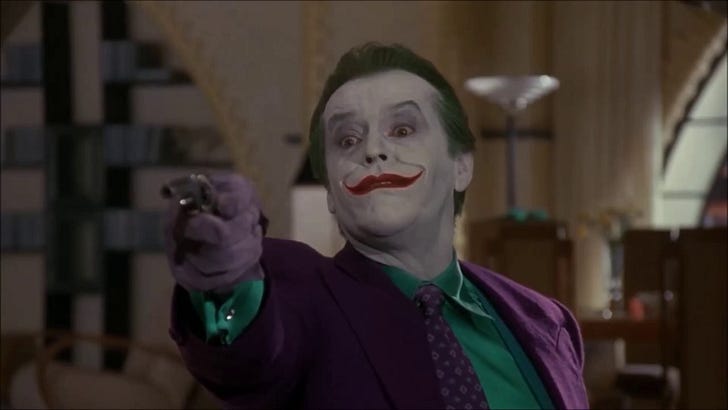Trump Tariffs: Dancing with the Devil in the Pale Moonlight
The Thin Line Between National Pride & Economic Chaos
In Tim Burtons Batman, the Joker asks a chilling question before committing acts of chaos: “Have you ever danced with the devil in the pale moonlight?” It’s a poetic expression of temptation, madness, excitement, and the thin line between good and evil.
As the U.S. grapples with economic challenges (Trade Deficits, Government Deficits, Inflation), PresidentTrump’s renewed embrace of sweeping tariffs feels eerily similar—a dance with economic forces that may tempt with short-term gains but risk plunging into long-term turmoil.
America First: The Temptation of Nationalism
Trump’s economic agenda, centered on tariffs, is rooted in nationalism: an “America First” vision designed to protect domestic industries, reduce trade deficits, and bring jobs back to America. On paper, this resonates with patriotic pride. Yet, as history and recent data shows, protectionism often leads not to prosperity but to pain—higher prices for consumers, reduced trade, and slower economic growth.
(The chart below shows that since Trumps Tariffs from 2018 which are still in effect today, have not improved the trade deficit, in fact its even worst now)
Trump’s latest proposal, set to take effect on February 1, 2025 (based on his recent comments), includes:
• A 10% tariff on all imports from China.
• A 25% tariff on goods from Canada and Mexico.
• Potentially higher tariffs targeting the European Union for perceived NATO underinvestment.
The Temptation of Tariffs: Protectionism and National Pride
On paper, Trump’s “America First” philosophy resonates with voters who see economic nationalism as a way to protect domestic jobs and industries. Tariffs, in this context, are the tempting fruit—a straightforward solution to complex issues like trade deficits, deindustrialization, and global competition.
However, the allure of tariffs is rooted in economic populism rather than sound free-market principles. History warns us that such measures can lead to ruin. The Smoot-Hawley Tariff Act of 1930, a protectionist policy meant to shield American farmers and industries, serves as a cautionary tale. Instead of spurring economic revival, it triggered a global trade war, deepened the Great Depression, and exacerbated unemployment. Between 1929 and 1934, global trade declined by approximately -66%, with U.S. imports and exports experiencing similar reductions. This sharp contraction was partially attributed to the Smoot-Hawley Tariff Act of 1930, which increased U.S. tariffs by about 20% on over 20,000 imported goods. Retaliatory tariffs from at least 25 countries further exacerbated the decline in trade, intensifying the economic downturn during the Great Depression. Much like the Joker’s antics, the unintended consequences were devastating chaos
Trump’s Dance with Tariffs: Chaos in the Global Economy
Keep reading with a 7-day free trial
Subscribe to The Coastal Journal to keep reading this post and get 7 days of free access to the full post archives.





